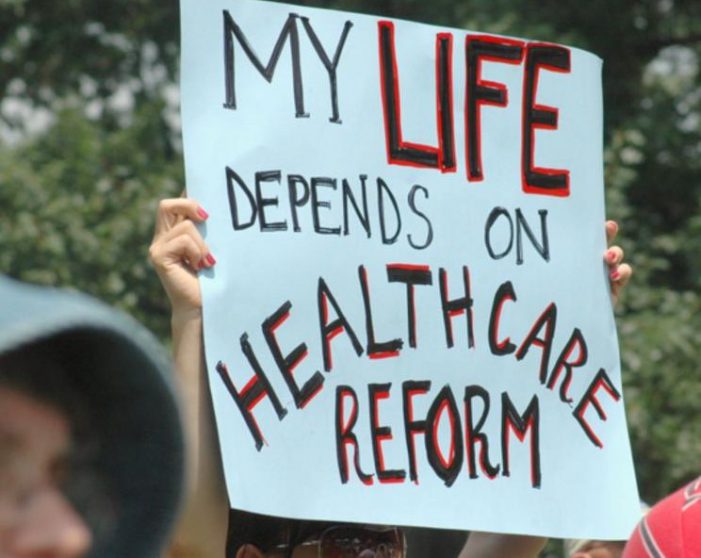By Lanhee J. Chen
And James C. Capretta
While America’s health-care system has long needed reform, President Obama unfortunately made many parts of it worse. His Affordable Care Act is based on more federal spending, regulation and coercion—and Americans are now experiencing the many unhappy consequences.
These include millions forced out of their previous insurance plans and into new ones with higher costs and more-restricted access to physicians; premiums increasing by double digits, even for the lowest-price silver plans offered in states using the Healthcare.gov website; and insurance companies losing billions of dollars because many healthy, middle-class families want no part of ObamaCare. And those not-for-profit “co-ops” established by the law? More than half have failed.
Congress passed a bill on Jan. 6 gutting the Affordable Care Act, which Mr. Obama vetoed two days later. Change will have to wait until the next president and Congress. But repealing the Affordable Care Act is not enough. The country has been drifting toward full federal control of health care for decades. What’s needed is a credible plan to reorient federal policy across the board toward markets and the preferences of consumers and patients, and away from one-size-fits-all bureaucratic micromanagement.
We have worked with eight colleagues to develop such a plan. It has these important features:
• Retaining employer coverage. About 155 million Americans get health insurance through their place of work. They should be left alone. The only change would be a new upper limit on the tax preference for employer-paid premiums, set so that only the most expensive 25% of plans would exceed it.
Employers and workers alike would have an incentive to cut health spending and keep premiums below the limit to avoid triggering exposure to taxation. This upper limit would replace the unfair and poorly designed “Cadillac” tax of ObamaCare that imposes a uniform 40% tax on high health-insurance premiums, with no adjustment based on the wages of workers affected.
• Tax credits. Individuals without employer coverage would get an age-adjusted tax credit to help purchase health insurance. These credits would be more flexible than ObamaCare’s premium subsides, because there would be no strings attached, i.e., none of the current federal law’s mandated benefits. Consumers could pick any state-approved plan that meets their needs and those of their family. Together with employer coverage, these tax credits would ensure that all have access to secure insurance.
• Continuous coverage protection. Instead of forcing people to buy government-approved insurance, we propose to give people a strong incentive to stay insured: As long as they remain continuously insured, they cannot be charged higher premiums, have their benefits restricted, or be denied enrollment in a plan based on their health status.
• Medicaid reform. This program would be split into two parts, one for able-bodied adults and their children, the other for the disabled and elderly. The federal government would give states fixed, per-person payments based on historical spending patterns for these distinct populations. States could manage the program without federal interference. Able-bodied adults and their children could combine Medicaid with the (refundable) federal tax credit to enroll in a private insurance option.
• Medicare reform. For new retirees, Medicare would provide a fixed level of assistance—derived from bids submitted by competing insurance carriers and the calculated cost of staying in traditional Medicare—which seniors would use to purchase a health plan of their choosing. Seniors could enroll in the traditional program, which would be modernized with a uniform deductible for hospital and physician services and more discretion for administrators to make distinctions among providers based on quality. Current retirees may choose the reformed program, or to remain in traditional Medicare with no substantial changes in their costs.
• Expanded health savings accounts. HSAs today are used in conjunction with high-deductible insurance. They provide protection against high-cost medical events without forcing people to pay premiums for plans that cover routine care. If the owners of HSAs do not spend all of the annual contributions, the money rolls over—so they can build capital for the future. Under our plan, all Americans could open and make annual contributions to an HSA, even when they are enrolled in plans with lower deductibles.
An evaluation of our plan by the nonpartisan Center for Health and Economy showed that it would cover as many people with insurance as ObamaCare has, but without the same massive expense and high taxes. The plan would also dramatically improve the nation’s budget outlook by putting both Medicaid and Medicare on a solid fiscal footing.
The Affordable Care Act was enacted in 2010 in part because Republicans failed to fix health care when they had the chance. They shouldn’t make that mistake again. This election year gives them an opportunity to demonstrate they have concrete plans to reverse ObamaCare and implement reforms based on consumer, not government, control.
Mr. Chen is a research fellow at the Hoover Institution and the director of domestic policy studies in the public-policy program at Stanford University. Mr. Capretta is a senior fellow at the Ethics and Public Policy Center and a visiting fellow at the American Enterprise Institute.

